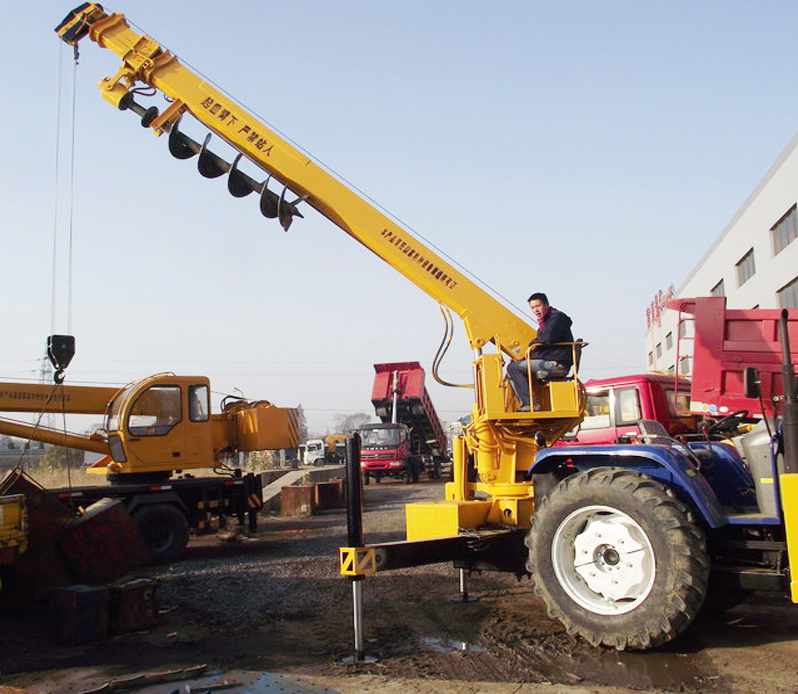Telescopic cranes are generally called hydraulic cranes. The screw rod is composed of a series of rectangular frames, ladder-shaped or other styles of symmetrical cross-sectional sections, which cooperate with each other. The highest part of the bottom end of the boom is called the tip or boom connection. The least part of the top of the cantilever is called the tail part or the tail of the cantilever. There can be one or several parts in the middle, which are called the first part and the second part. With the boom fully retracted, the telescopic boom crane is extremely maneuverable and easy to transport to the construction site.

The telescopic arm can be a fixed arm, a full power arm, or a combination of both. “Fixed screw” means that a part of it is determined to be extended or retracted. “Full driving force hoisting boom” means that a part of it is flexed, extended, or retracted by the hydraulic method. Some models and specifications have a full output power main boom, including a fixed part of the end of the arm. Read the article Operator’s Guide to properly use the type of boom used on your specific crane.
On the full-drive boom, each section (except the basic section) is telescopic by the hydraulic system, which is called a telescopic hydraulic cylinder. The hydraulic cylinders are installed in each part parallel to the axis of the boom. Most of the boom widening hydraulic cylinders on the telescopic boom is equipped with a speed control valve, allowing each part to be widened equally (telescopic). This kind of crane generally has a telescopic control rod in the car cab. However, on cranes that are not equipped with a speed control valve, the operator must add every part of the average. (The crane will have two or three boom telescopic control rods in the car cab, and each boom only controls one boom section.) If the boom section is not evenly flexed and extended, the part with the most sufficient flexion and extension of the boom section may bend To uneven ground stress.
When the load is placed on the telescopic boom, the net weight of the load on the boom will cause the hydraulic cylinder in the boom to stiffen and bend slightly. When the load is removed from the screw rod, the plunger pump will return in parallel. Therefore, never extend the boom when there is a load. Read the article Operator’s Guide to master the broadening information content of the boom.
Lifting organization
The lifting organization of the telescopic crane is the hoist barrel of the hydraulic drive. The hoist barrel is installed behind the boom on the crane room or the rotating wheel. Some hydraulic cranes are equipped with two crane wire rope drums: one for the main crane and the other for the auxiliary or whip.
Senate and House of Representatives
The house part is the rotating module of the supporting point screw. Some small and medium hydraulic cranes connect the operator’s car cab and load-bearing to rotating equipment.
Operator’s car cab. -The telescopic boom crane will be equipped with lifting, rotating, and boom control rods similar to the car cab of a lattice boom crane. The control rod is also given to flex and extend and retract the screw rod. Improve the system software without using a pedal brake system. When the crane control rod returns to the middle part, the hydraulic transmission system will fix the load in time.
Switching power supply. -The energy for telescopic cranes comes from gear oil. In most cases, the main medium automobile engine drives the hydraulic oil pump to provide gear oil for the hydraulic machine control system. The driving force is transferred to the oil motor or hydraulic system according to the oil circuit board of the operator’s centralized control system. The driving force of the hydraulic press gives active manipulation of all crane functions.
Load-bearing. -The counterweight on the telescopic crane gives great reliability when increasing the load. When you use a telescopic section crane to increase the close-to-carrying capacity from the perspective of a high telescopic boom, about 60% of the net weight of the load is placed on the feet that avoid the load. When you use the truss structure boom crane to implement the same increase, about 60% of the load is placed on the feet close to the load.
 truck crane,Truck mounted crane,Marine Crane –
truck crane,Truck mounted crane,Marine Crane –